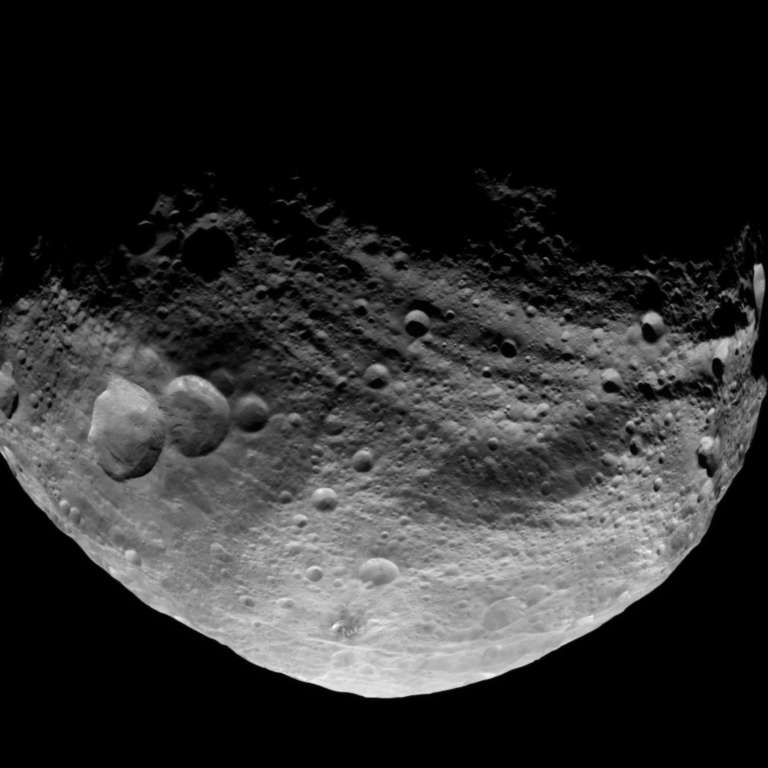Emily Lakdawalla • Jul 29, 2011
A different face of Vesta (oh, *there's* the craters!)
Here's the latest image release from Dawn at Vesta, taken from an altitude about twice as high as that of their first mapping orbit. This is the first view that they've shown us that hasn't contained the enormous central-peaked crater that dominates the south pole of the asteroid belt's second largest resident. I'm not exactly sure where on Vesta we are, but it's different; there are a lot more small craters here than you can see near the south polar basin.

I like the "snowman" series of craters on the left side. They're so crisp, and if I'm seeing things correctly, they're surrounded by a splat of ejecta that seems to lack the peppering of small craters that you can see elsewhere in this photo -- are the two biggest craters in the "snowman" a relatively fresh, double impact crater? That would be very cool. I also like the huge scarp that lies close to the terminator (the day-night boundary) -- is that part of the south polar basin? I'm not sure. And there's a nice dark splat near the bottom of the image, maybe another fresh crater.
But most places in this image I see lots and lots of small craters, at a density I don't think I saw in the earlier photos (though you have to be careful when making that comparison, because the earlier photos have inherently lower resolution so you wouldn't see as many smaller craters as are visible in this latest photo). Why do I care about how many little craters there are? Because the density of craters is used as a proxy for the age of surfaces in the solar system. An older surface, exposed to space for longer, will have more craters. Different crater densities across Vesta would mean that different bits of it have different ages, so Vesta has been a place that has changed geologically with time.
There's a press briefing Monday. Since it's been scheduled for a relatively early 9:00 a.m. I won't be able to get to JPL to cover it in time, but I'll be watching from home and hopefully will get to call in with some questions! As usual for JPL press briefings, you can watch live and chat on Ustream.
Let’s Go Beyond The Horizon
Every success in space exploration is the result of the community of space enthusiasts, like you, who believe it is important. You can help usher in the next great era of space exploration with your gift today.
Donate Today

 Explore Worlds
Explore Worlds Find Life
Find Life Defend Earth
Defend Earth

